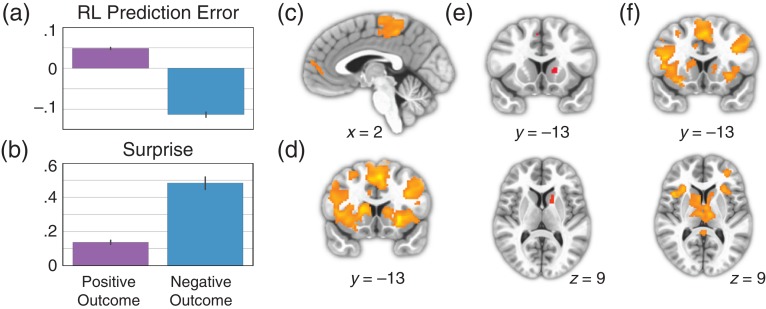Figure 3.
Striatum represents Bayesian surprise, not RL prediction error. (a) Mean prediction error from the best-fitting RL model, sorted by whether outcome was positive or negative. (b) Mean surprise from Bayesian rule learning model, sorted by whether outcome was positive or negative. (c) Whole-brain corrected results for the contrast of positive > negative outcomes. There were no significant voxels in the striatum for this contrast. (d) Whole-brain corrected results for the contrast of negative > positive outcomes. (e) Results of a conjunction analysis displaying voxels that are significantly active for both negative > positive outcomes and the parametric effect of surprise. Both contrasts were corrected for multiple comparisons across the whole-brain before being entered into the conjunction analysis. (f) Whole-brain corrected results for the contrast of parametric surprise > parametric prediction error, without the effect of outcome partialed out.

